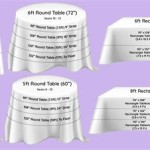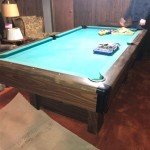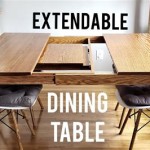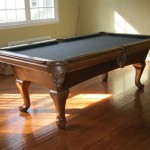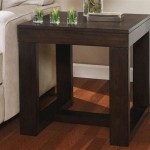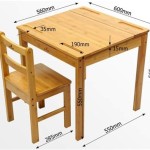How Much Is a Used Pool Table Worth?
Determining the value of a used pool table involves considering a multitude of factors. Unlike standardized commodities, pool tables possess unique characteristics influenced by brand, model, age, condition, materials, and features. Therefore, arriving at an accurate valuation necessitates a thorough examination of these elements. This article provides a comprehensive guide to understanding the variables impacting the price of a used pool table, aiding potential buyers and sellers in making informed decisions.
The used pool table market is diverse, ranging from entry-level models suitable for recreational play to high-end tables crafted for professional use. Prices can fluctuate significantly, from a few hundred dollars for a basic table to several thousand for a well-maintained, premium brand. The interplay of the following key factors will significantly affect the appraisal.
Brand and Model: A Key Indicator of Value
The brand name associated with a pool table often acts as a primary indicator of its potential value. Established brands, such as Brunswick, Olhausen, Connelly, and Diamond, generally command higher prices due to their reputations for quality craftsmanship, durable materials, and reliable performance. These brands have cultivated trust over decades, making their tables highly desirable among discerning players. Conversely, lesser-known or generic brands may offer lower price points but may also lack the build quality and longevity associated with premium brands.
Within a given brand, specific models can also significantly influence value. For instance, a classic Brunswick Anniversary model, known for its distinctive design and robust construction, will typically fetch a higher price than a more basic Brunswick model. Similarly, a Diamond Professional table, favored by tournament players, will command a premium over entry-level Diamond models. Researching the specific model and its original retail price provides a valuable baseline for determining its current market value.
Availability of replacement parts also plays a role. Established brands typically have better aftermarket support, making repairs and maintenance more straightforward and cost-effective. This factor can contribute to a higher resale value, as potential buyers are assured of the table's long-term usability.
Condition and Maintenance: A Critical Assessment
The condition of a used pool table is paramount in determining its worth. A table in pristine condition, with minimal wear and tear, will naturally command a higher price than one exhibiting significant damage or neglect. Inspecting the table meticulously for any signs of damage is crucial.
Key areas to examine include the playing surface (slate), the rails, the cushions, the pockets, the frame, and the legs. The slate should be perfectly level and free from cracks, chips, or warping. Even minor imperfections in the slate can affect ball roll and gameplay. Any significant damage to the slate will drastically reduce the table's value, potentially requiring costly repairs or replacement.
The rails and cushions should be in good condition, providing consistent ball rebound and accurate play. Hardened, cracked, or uneven cushions will impair gameplay and necessitate replacement. Inspect the rails for any signs of damage or detachment from the frame. Similarly, the pockets should be intact and securely attached. Ripped or damaged pockets detract from the table's aesthetic appeal and functionality.
The frame and legs should be structurally sound and free from rot, warping, or damage. A sturdy frame is essential for maintaining the table's levelness and stability. Examine the legs for any signs of weakness or instability. Any structural damage will compromise the table's integrity and negatively impact its value.
Regular maintenance, such as cleaning the slate and replacing the cloth, can significantly extend the lifespan of a pool table and preserve its value. A table that has been consistently maintained will typically command a higher price than one that has been neglected.
Age, Materials, and Features: Further Considerations
The age of a pool table can influence its value, although not always in a straightforward manner. While older tables may exhibit signs of wear and tear, some vintage models are highly prized for their craftsmanship, historical significance, and unique design. An antique pool table from a reputable manufacturer, in good condition, could be worth more than a newer, mass-produced model.
The materials used in the construction of a pool table also play a significant role in its value. Slate is the preferred material for the playing surface due to its flatness, density, and durability. Tables with thicker slate (typically 1 inch or 1.25 inches) are generally more valuable than those with thinner slate. The frame is typically constructed from hardwood, such as maple, oak, or mahogany. Hardwood frames are more durable and resistant to warping than those made from softwood. The quality of the wood and the craftsmanship of the frame contribute to the table's overall value.
Specific features, such as ball return systems, decorative inlays, and unique leg designs, can also enhance a pool table's value. Tables with automatic ball return systems are often more convenient and desirable than those without. Intricate inlays and carvings can add to the table's aesthetic appeal and increase its collectible value. Unique leg designs or custom finishes can also contribute to its uniqueness and desirability.
Furthermore, the inclusion of accessories can affect the overall value. Cues, balls, a rack, and a brush can add to the appeal, especially if they are of good quality and well-maintained. The presence of these items can make the table more attractive to potential buyers seeking a complete package.
The felt covering the slate, often referred to as cloth, is another important factor. Higher-quality cloth, such as worsted wool, offers superior ball roll and durability compared to cheaper blends. Replacing the cloth can be a significant expense, so the condition of the current cloth will impact the table's value. New or recently replaced cloth is a positive selling point.
The size of the pool table also matters. Standard sizes are 7-foot, 8-foot, and 9-foot. The 8-foot table is the most common for residential use. Larger tables, especially 9-foot models used in tournaments, might command a higher price, but this depends on the buyer's space and preferences. A less common size might limit the pool of potential buyers.
Location is another often overlooked aspect. Transporting a pool table is a specialized task that can be costly. A table located in an easily accessible area with minimal stairs will be more desirable and potentially command a slightly higher price than one that requires significant effort to move.
In summary, evaluating a used pool table’s worth requires a multi-faceted approach. Considering the brand, model, its overall condition, age, materials used, and any special features will allow for a more accurate appraisal. Thorough research and careful inspection are essential for both buyers and sellers to ensure a fair transaction in the used pool table market.

8ft Used Pool Table For China And American Classic Made In Com

Used Pool Table At Best In Nashik By Snooker Kart Id 12801357130

Hot Used Pool Table Billiard For China And Made In Com

Used Pool Table Kupatana

8 Gently Used Golden West Pool Table Royal Billiard Recreation

Quality Used Pool Tables Arizona S Best Selection Sporting Goods By Dealer Craigslist

Billiards Pool Tables Benner S

Valley Black Panther Home Use Pool Table 7ft Reconditioned

Billiard La Condo Dining Pool Table Robbies Billiards

8 Gently Used Gandy Pool Table Sold Royal Billiard Recreation


